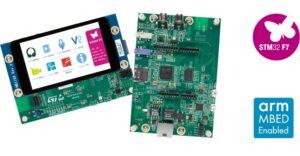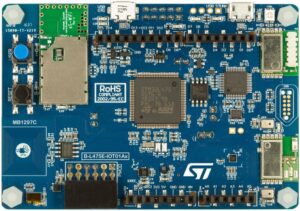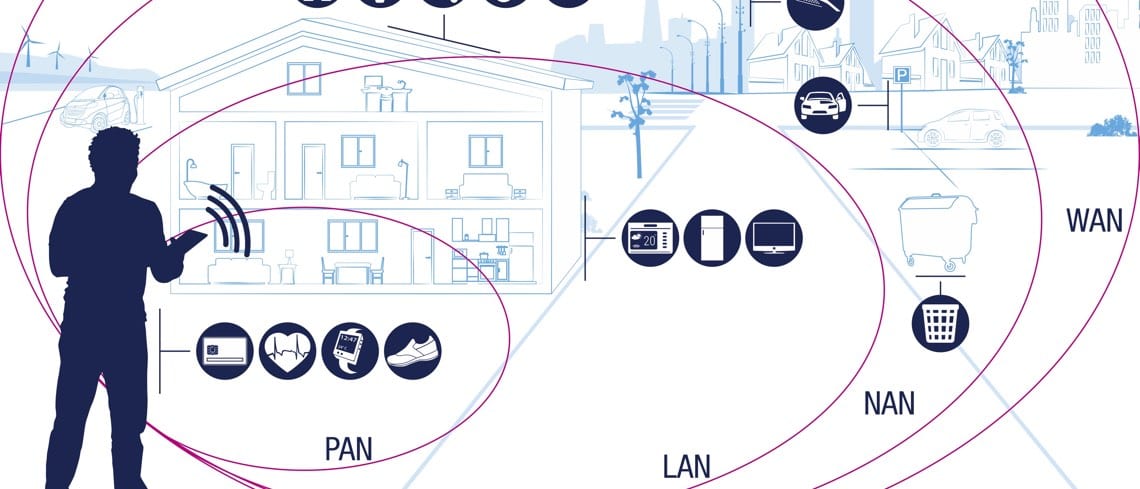Jumping on the Internet of Things (IoT) bandwagon is far from easy, but it is often necessary, especially when decision makers within a company start to pressure engineers, who must come up with magical solutions that completely transform the way we live or incur the apocalyptic wrath of their superiors. And although this isn’t as much of an exaggeration as we’d always like, it is precisely why we are holding a special session on Cloud Connected IoT Sensor Nodes at our ST Developers Conference on September 5, 2018, in Santa Clara, California. Indeed, this lecture will be the best place to start better understanding how sensors and cloud platforms interact, get a handle on the tools that facilitate prototyping, and learn how to go from concept to product in record time.
This talk will be the first of many on the subject of IoT, and as such, represents a birds-eye view of what it means to build a connected device today. Developers and enthusiasts with only a cursory knowledge will receive the foundations necessary to grow in this field, while those with more experience will get crucial information on platforms, hardware, and software, to help them optimize their projects or finally get the answer to a challenge they may be facing. This is also the reason why Ernesto Manuel Cantone will lead this lecture. At ST since 2002, where he started as an IC Designer, he is now IoT Marketing Manager, and he helps customers and partners with all their Smart Industry, Smart City, Smart Home, and Smart Things needs. He has thus a tremendous experience in the field, offering engineers practical solutions.
What’s the Best Starting Point?
It was thus a pleasure to sit down with Manuel before his talk to ask him a fundamental question: “What’s the most important thing to consider when starting an IoT project?” As he explained:
“Before jumping into their IoT project, engineers must have a clear idea of where the computing power will lie, because it will impact the very essence of their application. For instance, a product with many sensors may need to apply fusion algorithms locally, thus requiring edge computing, which means that a significant portion of the calculation will happen before data even reaches the cloud. Inversely, other systems will rely almost entirely on cloud computing.”

Answering this question will obviously impact the engineer’s choice of microcontrollers (MCU), which will lead to better define the electrical and mobility constraints that the product must respect. In this sense, designers must find the best compromise between computational throughput and power requirements. Knowing where the computing will happen will also determine what type of wireless module will communicate with the cloud. For instance, a device like the baby monitor we already covered on this blog, the Snuza Pico, can rely on Bluetooth LE to send small packets of information. On the other hand, the parking sensor the PlacePod we looked at a few months ago must use a sub-gigahertz network to cover vastly greater distances. Hence, the first advantage of Manuel’s talk will be to help novices and experts sharpen the way they think about an IoT product to arrive at optimal solutions faster.
What are IoT’s Unique Challenges?
Understanding where computing will happen to better gauge the foundations of a product, such as its MCU and its RF, highlights one of the unique challenges of an IoT project: the need to build a comprehensive end-to-end solution. From a device sensing the real world to the cloud platform that will receive information, handle the application’s back end and front end, as well as manage firmware updates and device deployments in the field, IoT is a unique loop that falls apart if there’s a weak link in the chain. Engineers must thus often go beyond their area of expertise to ensure that they design a robust solution. This is also one of the critical aspects of Manuel’s talk. As he explains:
“The first part of my presentation will be an introduction to what IoT means and how developers can create end-to-end solutions with tools and deliverables from the ST ecosystem. We will thus look at the developers’ journey from the perspective of the firmware and the hardware, with a dive into the tools and cloud platforms people can use.”

In anticipation to Manuel’s session, engineers can check out the B-L475E-IOT01A Discovery kit IoT Node and how they can use cloud connector firmware expansion (X-CUBE-AWS, X-CUBE-AZURE, X-CUBE-WATSON) or advanced application examples Function Pack firmware package (FP-CLD-AZURE1, FP-CLD-WATSON1) to set up a node in minutes and take advantage of essential features like encrypted communications over TLS or firmware Over-the-Air updates with minimal effort. Another Starter Kit of interest is STEVAL-STLKT01V1 (commonly known as SensorTile) that allows users to stream sensor data to the cloud of choice through a Smartphone app (BlueMS). There are countless IoT projects from universities using SensorTile that will help engineers draw inspiration and get solutions.
What Happens Next?
After Manuel’s talk, developers will have access to a hands-on area where they can check out demos of the platforms discussed. It is absolutely crucial that engineers get to experience them first-hand with ST engineers at their sides to answer questions and show them in real time how they too can come up with a full end-to-end solution quickly and efficiently. We are also offering follow-up sessions that will delve into more specific challenges that plague IoT devices, one of them being security. For instance, Bob Waskiewicz will give a lecture on Platform Level Security for IoT Devices to help developers understand what security means both at hardware and software level, from anti-tampering measures to TLS certificates in MQTT connections.
ST Developers Conference will also be home to dedicated tracks and hands-on workshops in collaboration with our Cloud partners. At the training sessions participants will leave with a development kit, and all the tools and experience they need to start building their own application. We thus invite you to register to the ST Developers Conference while tickets are still available.
- Learn more about the ST Developers Conference 2018 and check out the full agenda
